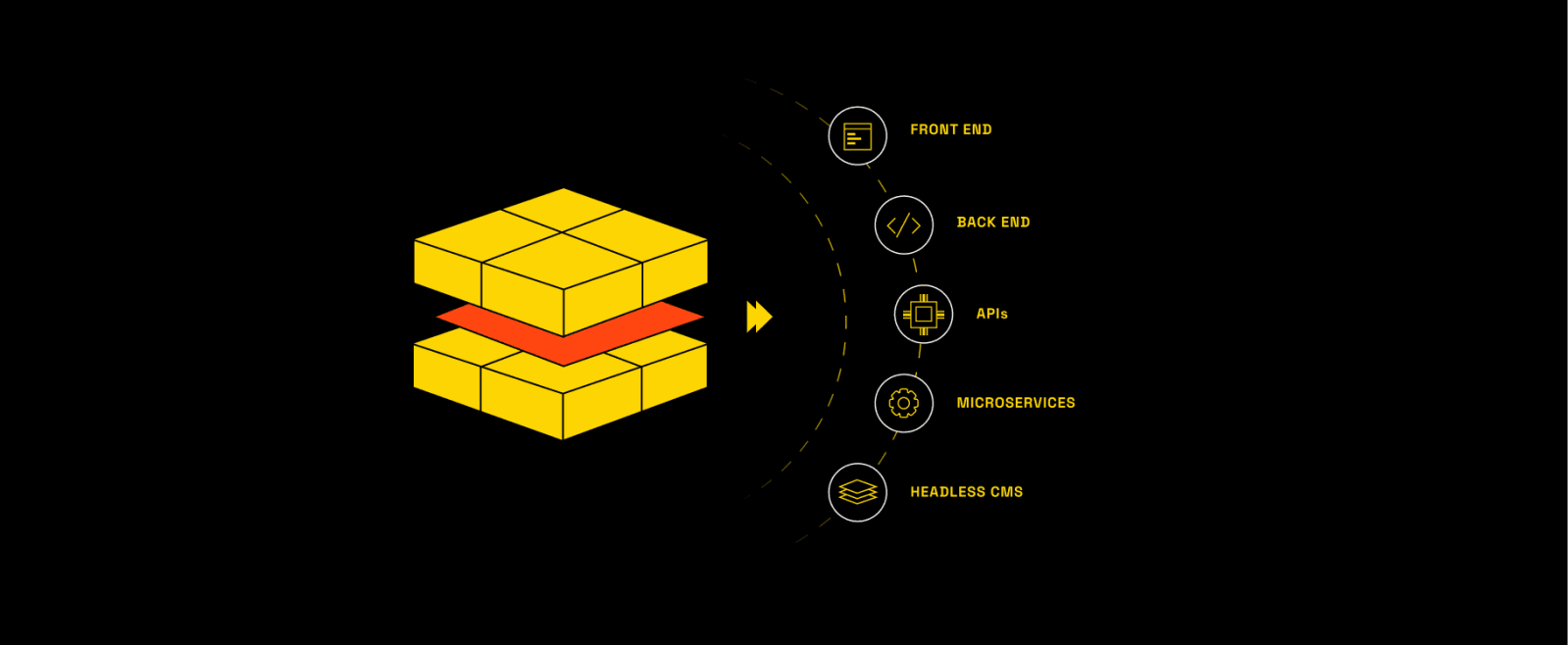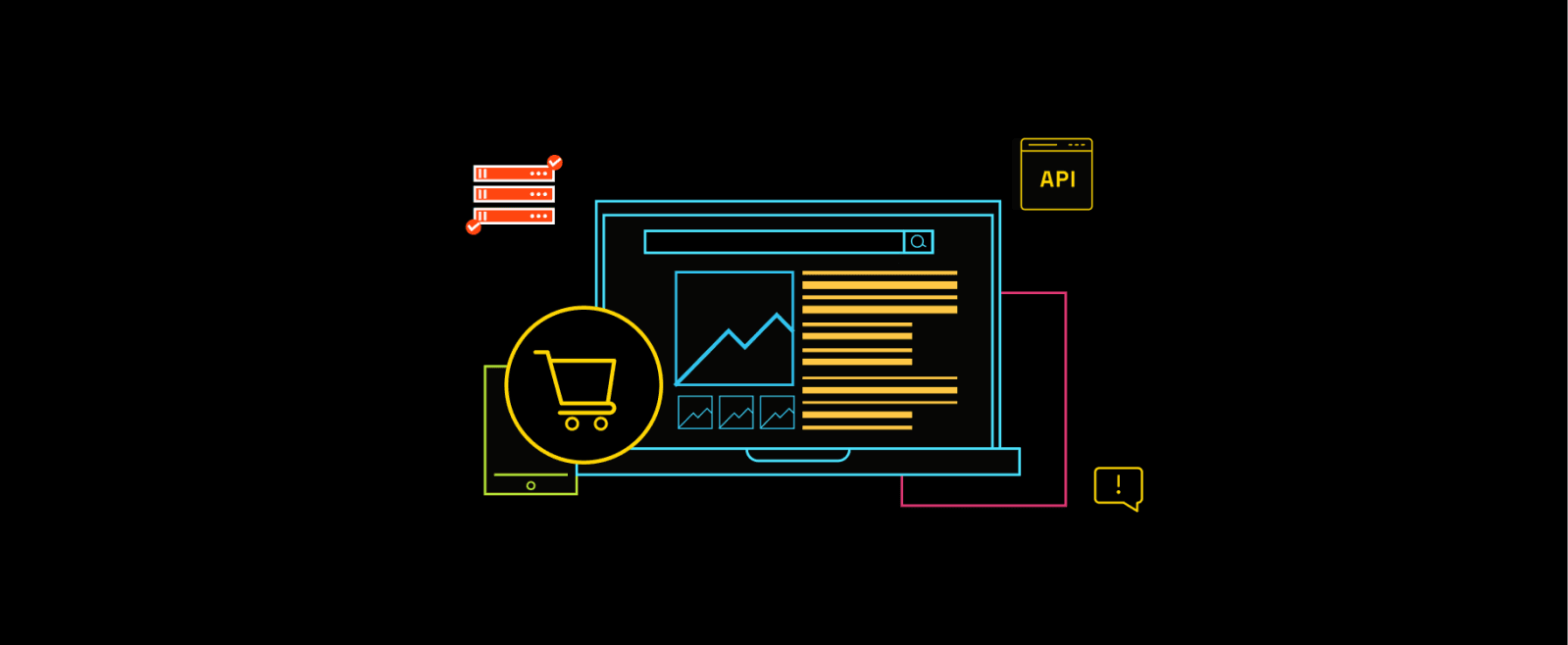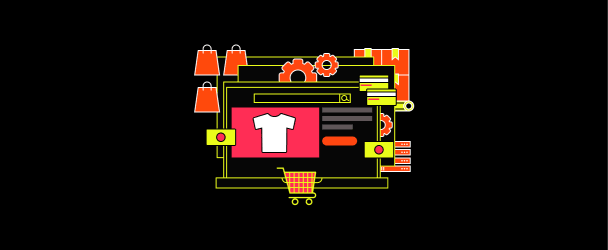What is MACH Architecture? A Business-Ready Guide to Building Scalable Digital Systems
If you're a digital leader exploring ways to modernize your tech stack, MACH architecture might already be on your radar — and for good reason. It's not just another acronym; it's a foundational shift in how enterprise systems are designed, integrated, and scaled.
MACH stands for Microservices, API-first, Cloud-native, and Headless. These principles together form a modular, scalable architecture that helps you break free from monolithic systems — so you can evolve fast, integrate flexibly, and support omnichannel experiences with ease.
As more companies move away from rigid, one-size-fits-all platforms, MACH is becoming the go-to digital architecture for organizations that need to move quickly and innovate continuously.
In this guide, we’ll explore:
- Why MACH Architecture Replaced Monolithic Systems
- How each MACH principle works in practice
- When MACH fits (and when it doesn’t)
- Common pitfalls to avoid
- Real-world examples from brands like Puma and Nike
Let’s start by understanding the shift from monolithic to MACH and why that evolution matters now more than ever.
Why MACH Architecture Replaced Monolithic Systems in Modern Digital Platforms
For decades, monolithic architectures powered enterprise systems across commerce, manufacturing, finance, and beyond. But as digital expectations grew—across speed, scale, and customer experience—those traditional systems began to show cracks.
In a monolith, every feature is part of one tightly coupled codebase. A change in one area, like pricing logic or order management, can unintentionally disrupt others. Even routine updates demand full regression testing, draining time and resources. This slows down product launches, increases risk, and makes experimentation nearly impossible.
Worse, most monoliths lock you into a single vendor or platform. Adopting new tools, say a personalized search engine or AI-driven CMS, requires complex workarounds, or worse, complete replatforming.
That rigidity led to the rise of modular architecture: systems built to evolve. MACH took this one step further—defining how each layer of your stack should be decoupled and connected using best-of-breed principles like API-first and cloud-native infrastructure.
The result? An architecture designed for continuous change. MACH is the answer to why enterprise systems were failing in the first place.
The Core Principles of MACH Architecture: Microservices, API-First, Cloud-Native, Headless
Each MACH principle is a practical response to the limitations of legacy systems. From deployment flexibility to omnichannel delivery, these four principles shape how modern enterprises architect future-ready platforms.
Microservices: The Engine of Modular Commerce Platforms
Microservices are the foundation of MACH architecture’s flexibility. Instead of one monolithic codebase, you build a network of independently deployable services—each responsible for a specific capability like search, checkout, or order management. This allows development teams to build, deploy, and scale each service on its own timeline.
In a B2B commerce context, this means you can roll out a new quote engine without affecting inventory systems. Or A/B test a new pricing model without touching your ERP integration. This autonomy also reduces platform risk—if a service fails, it doesn’t take the whole system down.
But going modular doesn’t mean fragmenting for the sake of it. It’s not about how many microservices you run—it’s about how well they’re scoped. For most enterprise teams, that means designing services around clear business domains and enforcing API-first communication patterns to ensure interoperability across your stack.
According to IMARC Group, the global microservices architecture market is projected to grow from $4.2 billion in 2024 to $13.1 billion by 2033, driven by demand for scalability, agility, and cloud-native capabilities across sectors like eCommerce, manufacturing, and BFSI. That’s a 12.7% CAGR, underscoring its growing role in future-ready architecture.
This kind of growth signals a larger shift: enterprises are moving from centralized, monolithic platforms to decentralized, domain-driven service models and microservices are how they get there.
API-First: The Integration Foundation of MACH architecture
In MACH architecture, API-first is the foundation. It means that every service or component is designed to communicate through APIs before any interface or business logic is built. You define the contract first—how data moves, how systems talk, and how future changes won’t break things.
This principle is what makes MACH scalable and extensible. APIs ensure that microservices, frontends, third-party tools, and legacy systems can all interact without hand-coded dependencies or tight coupling.
But with great freedom comes complexity. API-first requires:
-
Intentional API design that maps to business processes, not just data structures
-
Versioning strategies to avoid breaking changes during rollouts
-
Centralized documentation and governance to keep your integrations clean
-
Robust testing environments that simulate real-world traffic, dependencies, and failovers
Done right, this unlocks modular growth. Add new storefronts, integrate new PIMs, launch partner portals— without rewriting your backend or disrupting operations.
Cloud-Native: Infrastructure Built for Speed and Scale
Cloud-native isn’t just about deploying to the cloud but about designing systems to thrive in it. It leverages containerization (via Docker), orchestration (through Kubernetes), and resilient design patterns to build services that are scalable, fault-tolerant, and easy to iterate.
In the context of MACH architecture, this enables B2B and enterprise teams to scale individual services—like checkout or search—based on real-time demand without overprovisioning entire systems. Whether you're dealing with seasonal traffic spikes, launching a new product line, or expanding globally, cloud-native setups help you scale precisely, not reactively.
It also transforms your deployment playbook. Instead of manual rollouts or scheduled downtimes, teams can push updates with zero downtime, automate rollbacks, and apply infrastructure-as-code principles for better governance.
But there’s a mindset shift: cloud-native requires new skill sets in observability, container security, and orchestration strategies. For teams still transitioning from traditional hosting, this shift must be planned carefully to avoid cost overruns or architectural missteps.
Headless: The Engine Behind Omnichannel Freedom
Headless architecture decouples the front-end experience from backend logic—allowing you to design, build, and iterate on customer interfaces without being constrained by your commerce engine.
In MACH, headless is what gives brands frontend freedom. You can tailor distinct experiences for different markets, customer segments, or channels (web, app, kiosk, even AR/VR) while reusing the same backend logic, PIM, or order engine. For enterprise businesses, this unlocks the ability to serve multiple brands or regions from a shared core infrastructure—a massive advantage for scaling globally.
It also accelerates testing and personalization. Want to run an A/B test on product discovery for one region? You can do that without waiting on backend changes. Want to localize UX in a new market? Your frontend team can launch that independently.
But the trade-off is real: going headless increases frontend ownership, requiring teams to manage API orchestration, caching, and performance tuning across multiple UIs. The payoff? Better performance, more control, and experiences your customers actually remember.
Want to see what a MACH-powered headless rollout looks like in practice? Check out our architecture breakdown.
Business Benefits of MACH Architecture: Agility, Scalability, and Long-term ROI
Agility Without Full Replatforming
Traditional replatforming projects often span multiple quarters and demand significant budget and stakeholder buy-in. MACH architecture changes that equation. Because it's modular by design, you can modernize one capability at a time—whether it's pricing logic, search, or checkout—without disrupting your entire system.
This incremental approach reduces risk, speeds up delivery, and allows organizations to prioritize high-impact areas first. According to Contentful, 75% of organizations that adopt MACH report outperforming competitors in digital readiness and responsiveness.
Independent Scaling and Faster Rollouts
Modularity is a performance advantage. In MACH architecture, individual services scale independently. During a flash sale, your checkout and inventory services can auto-scale, while other systems stay untouched—reducing cloud costs and improving efficiency.
More importantly, teams can deploy updates in parallel. Instead of long dev cycles and release bottlenecks, MACH enables continuous deployment.
Cost Efficiency and Long-Term ROI
MACH architecture delivers financial benefits through:
-
Reduced vendor lock-in – choose the best-fit service for each function
-
Elastic infrastructure – scale resources based on real-time demand
-
Easier maintenance – update or fix services without system-wide disruption
-
Future-proofing – adopt new tech without replatforming
When MACH aligns your tech stack with your business priorities, it stops being just an architectural strategy and becomes an operational advantage.
MACH in Practice: How to Know If It’s the Right Fit
MACH architecture isn’t a silver bullet. It’s powerful, yes—but only when applied in the right organizational context. Here’s how to evaluate whether your business is architecturally and operationally ready to go modular.
When MACH Makes Strategic Sense
MACH works best for enterprises that:
-
Operate across multiple digital touchpoints (e.g., web, mobile, in-store kiosks) and need consistent, high-performance experiences across each.
-
Frequently iterate or experiment with new services, features, or digital offerings.
-
Have fragmented backend systems—and see API-first as the way to unify without a full rip-and-replace.
-
Are building for scale, whether that means global storefronts, multi-brand portfolios, or evolving product catalogs.
-
Have a mature DevOps culture and are already practicing CI/CD, containerization, or version-controlled infrastructure.
Think of a global retail brand managing a shared inventory system, multiple frontend storefronts across geographies, and region-specific personalization rules. MACH enables them to localize experiences without duplicating infrastructure.
When You Should Pause
On the flip side, MACH might introduce more risk than reward if your org:
-
Lacks in-house engineering depth (especially in microservices, APIs, DevOps, and infra).
-
Relies on tightly coupled legacy systems where decoupling would disrupt core business logic.
-
Operates in tightly regulated industries with specific compliance constraints (e.g., HIPAA, PCI-DSS) that are easier to manage in single-vendor, centralized platforms.
-
Doesn’t yet need agility at scale—for example, if your product and service offering is still relatively simple.
MACH is not “all or nothing.” It’s modular for a reason. You can (and should) start small.
What to Assess Before Going MACH
Here’s a readiness framework we use with clients considering MACH transitions:
Technical Maturity
-
Are your engineering teams fluent in microservices and containerization?
-
Do you have CI/CD pipelines and robust testing coverage?
-
Can your infrastructure support API-first, cloud-native patterns?
Organizational Alignment
-
Do business leaders understand MACH’s value beyond just “going headless”?
-
Is there clarity on who owns what (e.g., domain ownership, service boundaries)?
-
Are you budgeting for long-term investment—not just initial implementation?
Infrastructure & Security
-
Are your current systems modular enough to support phased decoupling?
-
Do you have proper observability tools (monitoring, tracing, alerting)?
-
What are your compliance and data sovereignty needs?
Start with one business-critical capability. Like quote-to-cash or product search. Prove the model, build internal buy-in, then expand.
Common Challenges in MACH Adoption (And How to Avoid Them)
Adopting MACH architecture isn't a plug-and-play move. Most failures don’t happen because the model is flawed. They happen because of poor scoping, rushed execution, or a misalignment between technical ambition and organizational readiness.
Below are the three most cited MACH pitfalls and how to navigate around them.
1. Orchestrating Complexity (Not Just APIs)
Integrating multiple microservices sounds elegant on paper. But in reality, most teams underestimate the time, cost, and operational load involved in stitching together services—especially when connecting legacy ERP, PIM, CRM, and order orchestration systems.
What goes wrong:
-
APIs are treated like one-time connectors instead of long-term contracts.
-
Lack of clear domain ownership results in overlapping responsibilities and broken data flows.
-
Teams attempt a “big bang” transformation instead of starting with a single high-value domain.
What to do instead:
-
Implement domain-driven design to establish clean service boundaries.
-
Set up an internal developer portal or API gateway to document, test, and version services.
-
Invest in observability tools—monitoring, tracing, logging—to catch integration failures early.
Pro tip: The hardest part of MACH isn’t building—it’s the orchestration layer. Budget accordingly.
2. Talent Gaps and Overengineering
MACH maturity requires a full-stack rethink. You need engineers who understand distributed systems, DevOps pipelines, security in multi-service environments, and scalable infra-as-code. Many teams fall into the trap of mimicking Big Tech setups—without the team size or budget to support them.
What goes wrong:
-
Overly fragmented services lead to higher operational overhead.
-
Teams lack experience in versioning, testing, and deploying microservices at scale.
-
DevOps bottlenecks emerge when automation and CI/CD aren’t mature.
What to do instead:
-
Right-size your architecture. Don’t split services unless they’re owned, maintained, and justified.
-
Cross-train frontend, backend, and DevOps engineers on MACH-specific tooling and workflows.
-
Bring in external partners—but vet them for MACH-specific implementation expertise, not just cloud experience.
3. Organizational Drag and Resistance
Even the best technical plans fail if the org isn’t aligned. MACH shifts how teams work, not just what they build. Teams used to managing all functionality in a monolith can struggle with the ambiguity that comes from decentralized ownership.
What goes wrong:
-
Business leaders view MACH as a backend-only decision.
-
Product and engineering teams resist shifting away from tightly coupled release cycles.
-
Lack of KPIs tied to business outcomes makes it hard to justify continued investment.
What to do instead:
-
Start with a visible use case like launching a new storefront or product line—that directly ties to revenue.
-
Create a MACH center of excellence with representation across product, engineering, and business.
-
Tie success metrics to real outcomes: conversion lift, release velocity, page speed, or support ticket deflection.
How to Get Started with MACH Architecture
If MACH feels like a fit for your business, don’t start by tearing down your monolith but start by reducing risk.
1. Choose a Strategic Starting Point
A full replatform is rarely the first move. Instead, decouple a single high-impact domain where MACH can prove value without collateral risk.
Look for:
-
Checkout or Promotions engines—core to revenue, but loosely coupled
-
Product search or catalog modules—easy to isolate, critical for UX
-
Frontend refresh using a headless CMS—lets you test MACH without backend disruption
Your goal: Pick a domain that meets three criteria: high business impact, low integration friction, and measurable success metrics.
2. Build a Parallel Track, Not a Break-the-System Plan
Spin up the MACH component alongside your current stack. Run it in production, monitor KPIs, and stress-test it for edge cases. This dual-run approach protects continuity while giving your team hands-on MACH experience.
Don’t rip-and-replace. Integrate, validate, scale.
3. Align Budget with Milestones, Not Tools
Budgeting for MACH isn't about choosing the “right” CMS or search engine. It's about planning for:
-
Engineering ramp-up and upskilling
-
DevOps and orchestration tooling (Kubernetes, CI/CD)
-
Performance and security monitoring across distributed systems
Plan quarterly checkpoints that map MACH capabilities to business outcomes—like faster deployments or increased cart conversion.
4. Bring in MACH-Proven Implementation Partners
MACH is a coordination challenge across architecture, ops, and product.
Look for partners who:
-
Have delivered MACH systems in your industry
-
Offer strategic consulting, not just dev teams
Show evidence of MACH-to-ERP, CRM, or OMS integrations
Need a sanity check before diving in?
We’ve helped teams phase MACH into complex environments, without burning time or budget. Drop us a line at hello@coderapper.com if you want to bounce around ideas or validate your approach.
Final Thoughts
The value of MACH architecture compounds over time. With each principle — microservices, API-first, cloud-native, and headless — you’re not just optimizing tech. You’re building a future-ready infrastructure that aligns with how modern commerce operates: dynamic, modular, and customer-first.
Considering MACH for your ecosystem?
Whether you're exploring a phased migration or architecting for scale from day one, our technical team can help you map a path that fits your org structure, systems, and strategic goals.
📩 Drop us a line at hello@coderapper.com, even if it’s just to gut-check your plan.






